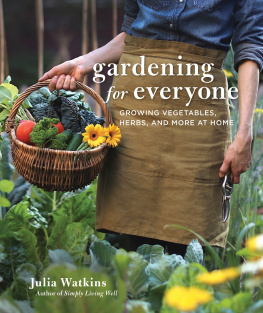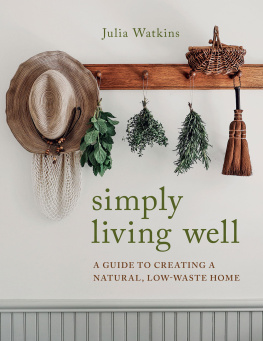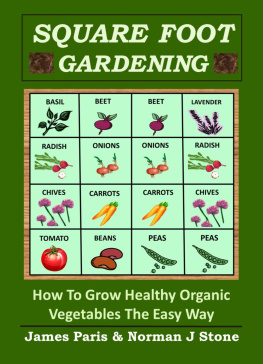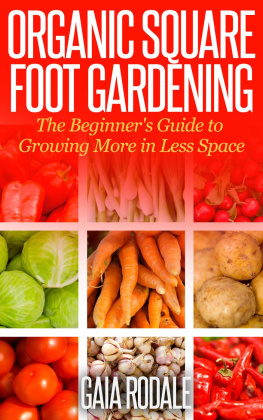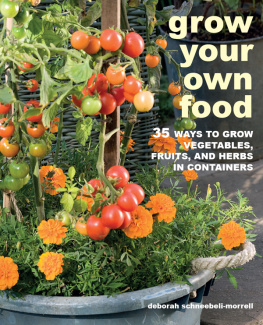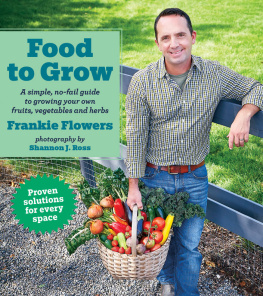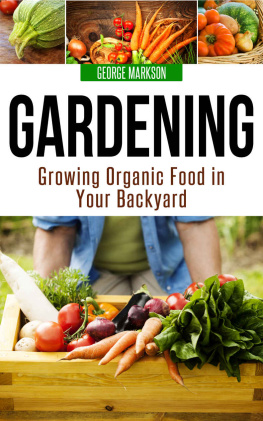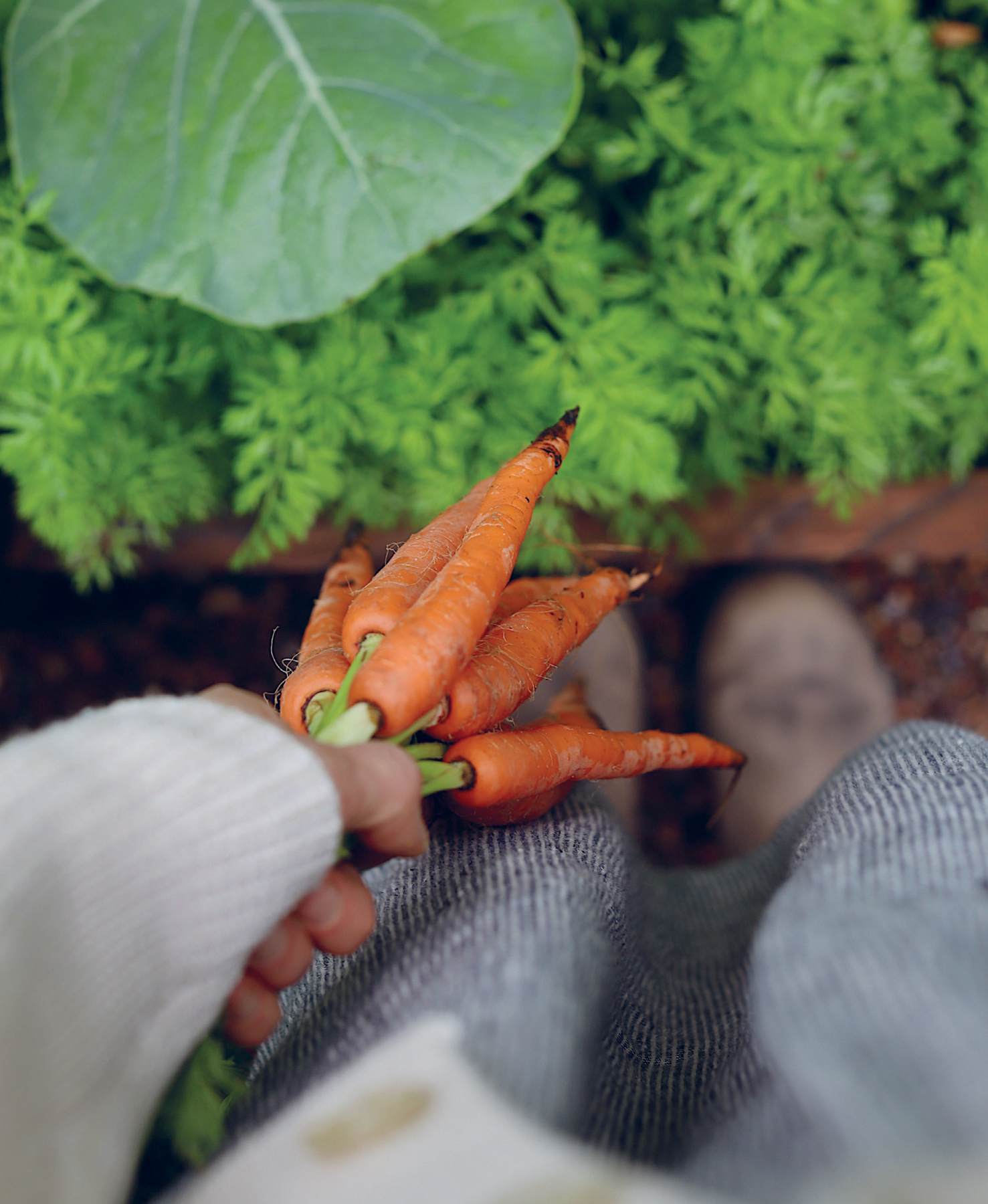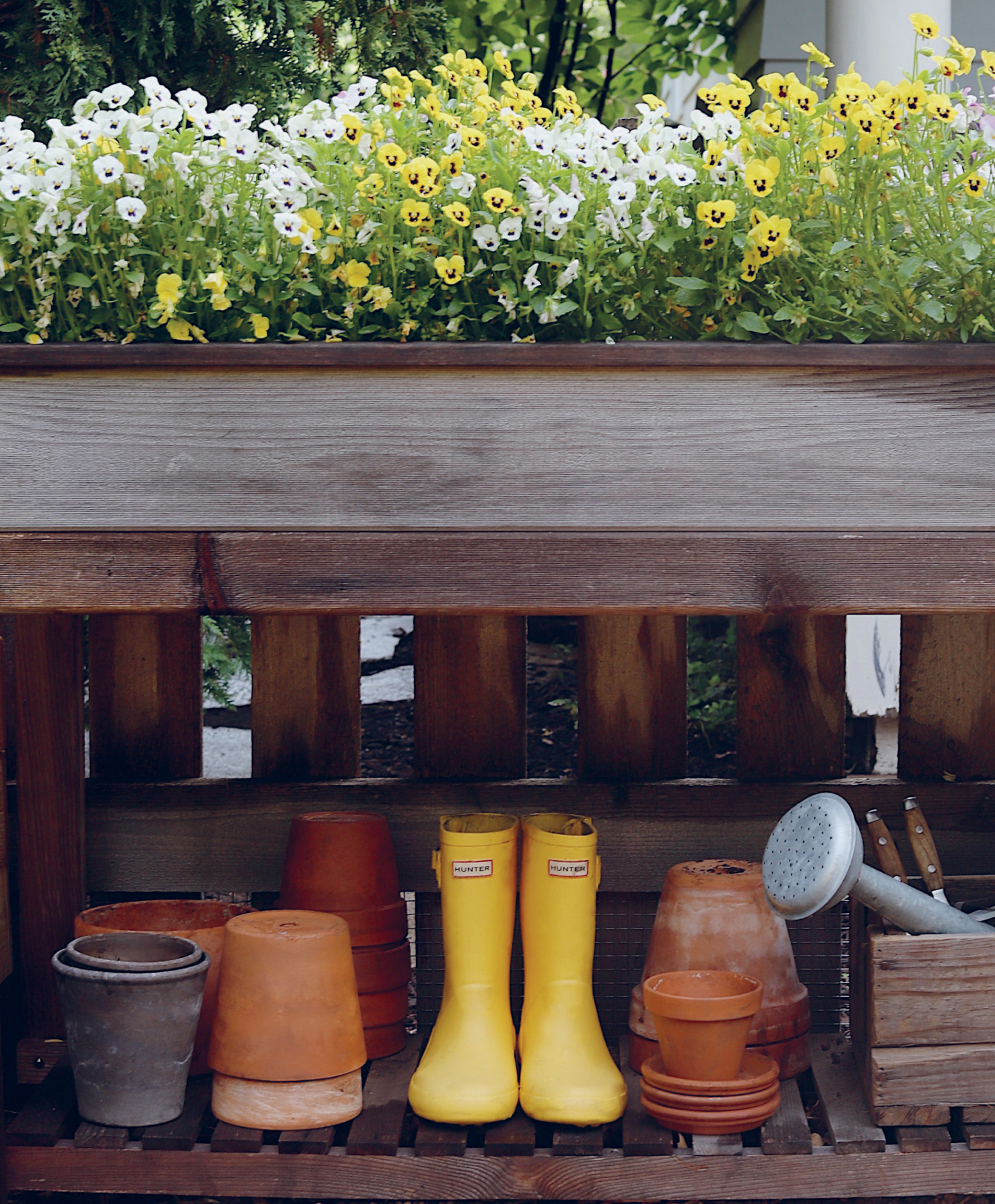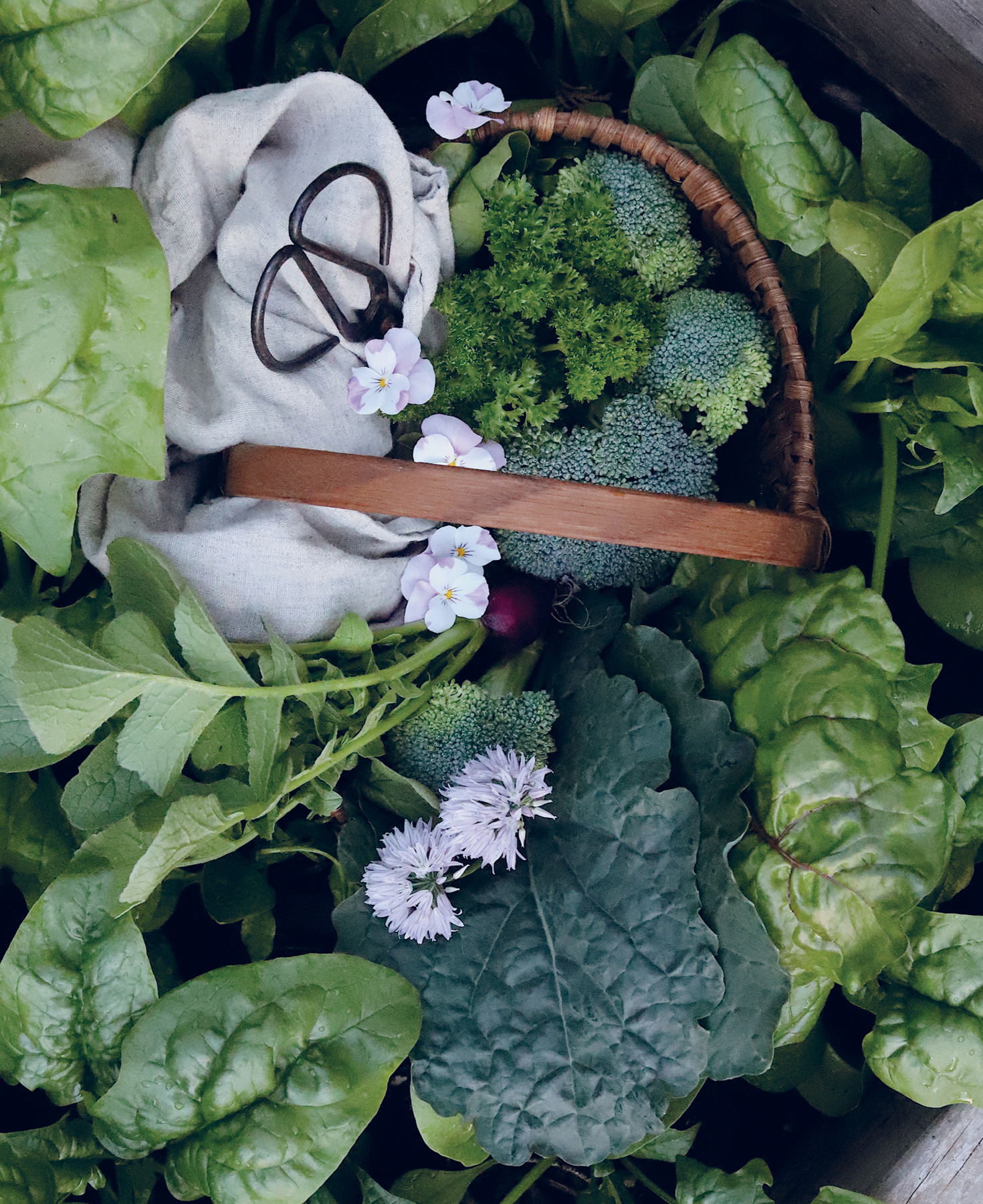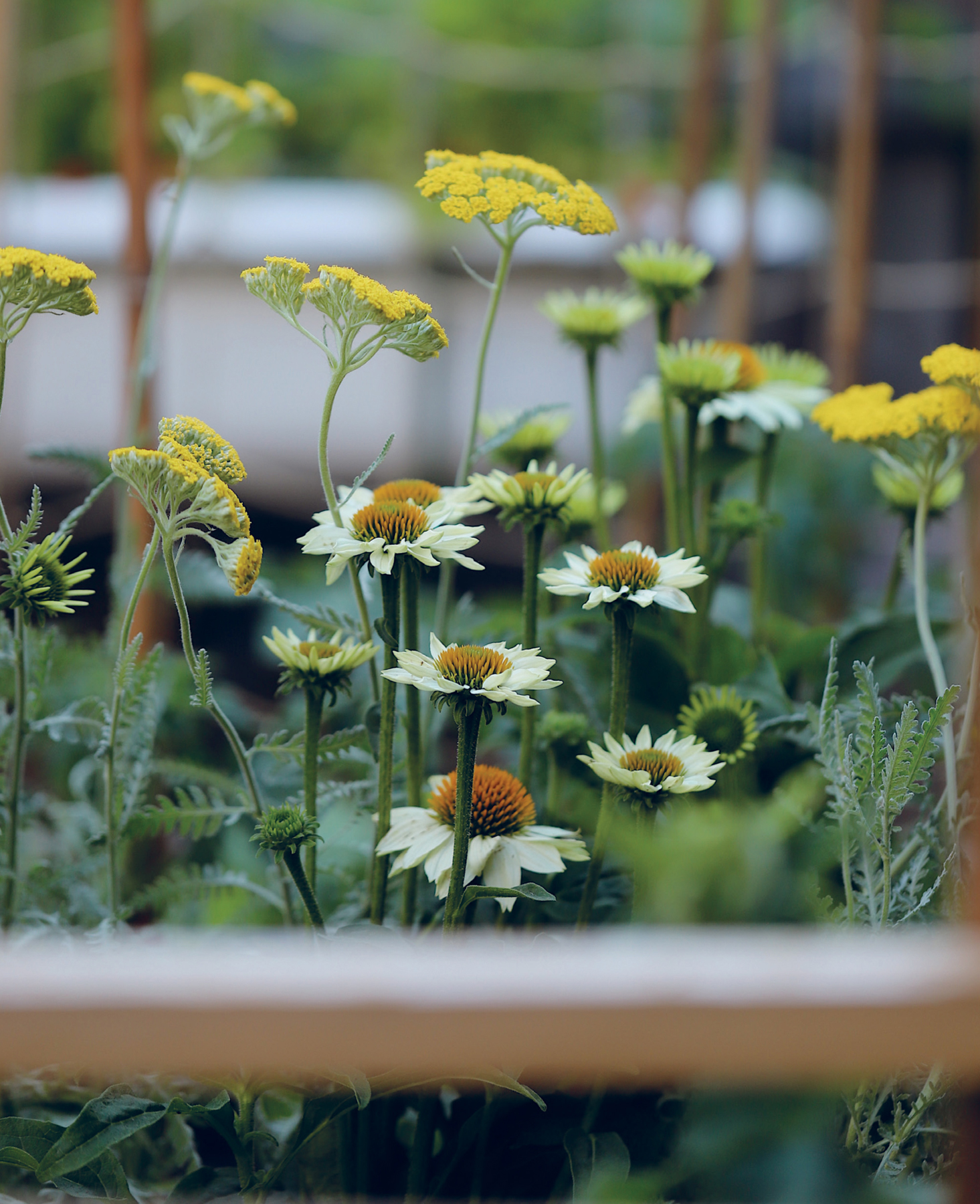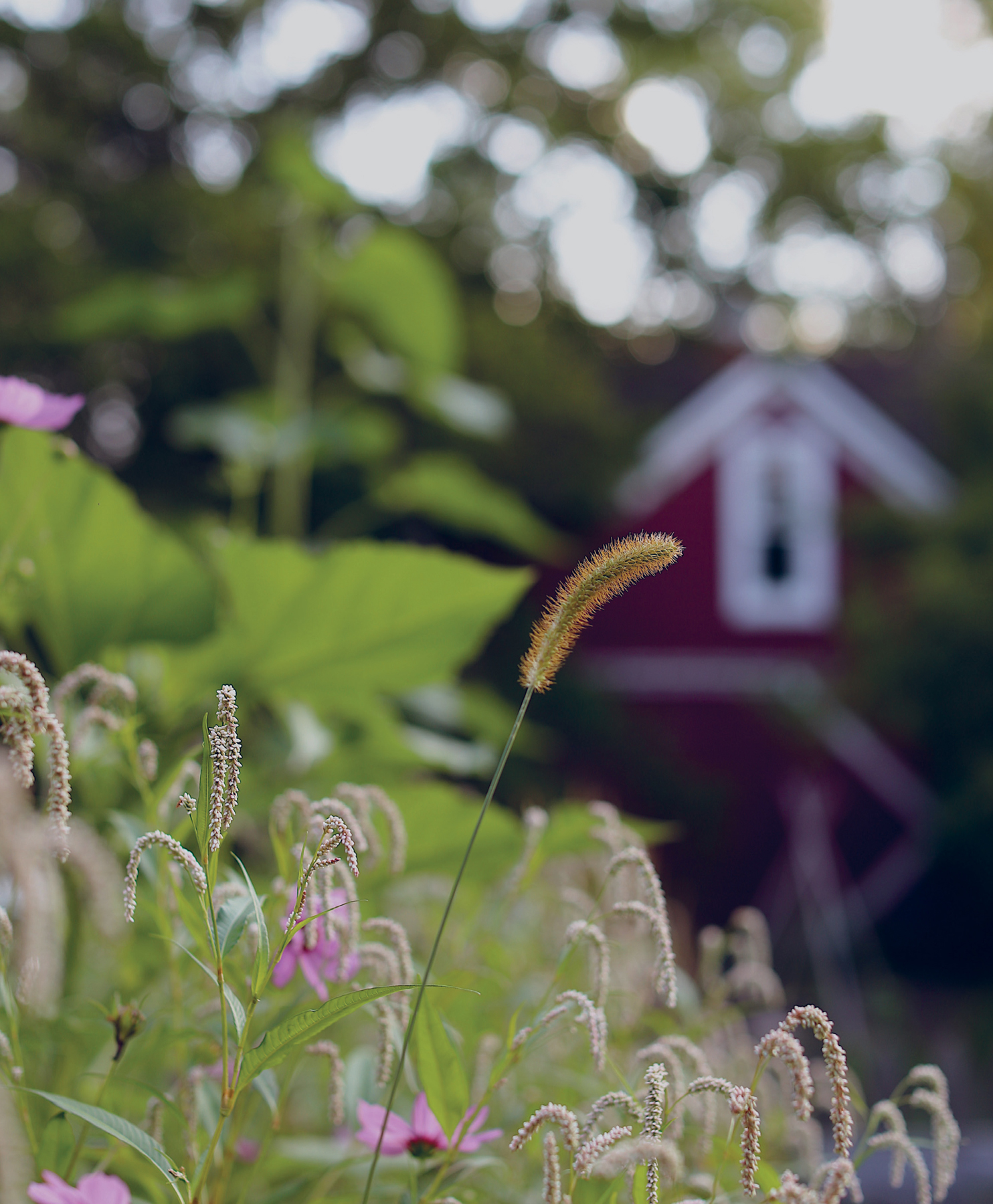Contents
Guide
Contents
I grew up in a small town in South Carolina, a stones throw from my grandparents house, where as a kid I spent a lot of time. This was in the 1980s but, whenever I was there, it felt like something out of the 1950sor even the 1800s. My grandparents lived a slow, simple life, with a calm, steady routine. They cooked every meal from scratchno store-bought sauces or just-add-water mixes for them. Most ingredients were picked fresh from the big, sumptuous garden just outside their back door. And almost nothing was ever left to waste.
My grandfather dug a garden nearly the size of his backyard almost every year of his life. Hed then go and dig his mothers garden, which he also did nearly every year of his life. She made it to age 102 and was still tending her backyard garden the spring she passed away. My grandfathers gardens were immaculate. Each crop occupied two long rows, with seedlings spaced perfectly apart. Tomatoes were staked in a weave string trellis, and corn always stood tall and proud. Watermelons and cantaloupes slumped to the same side, while lines of cabbage, spinach, and other greens neatly framed the cucumbers, zucchinis, radishes, turnips, beets, potatoes, green beans, black-eyed peas, summer squash, and okra (always pronounced okrey).
His gardens were kitchen gardensin every sense of the term. Close to the kitchen, tended daily, and grown for home, with he and my grandmother making frequent trips out back at mealtimes and whenever someone stopped by for a visit. I always loved just hanging out in the garden, walking idly among the rows. My grandfather did too, and he even placed a rickety old swing by a nearby tree, with room for three, if you didnt mind the squeeze. Whether you were harvesting a melon or passing the time, my grandfathers garden was the place to be.
Life revolved around the garden. By the back door, my grandparents kept a broad harvest table, often lined with tomatoes, melons, and sacks of black-eyed peas. If we werent growing food, we were eating it. Whenever my mom dropped by, shed sit at the table with my grandmother, playing catch-up while snapping green beans and snacking on sliced, salted tomatoes. I cant remember a weekend where we didnt have collard greens, creamed corn, and potatoes for lunch with the whole family!
My taste buds can attesttheres nothing more scrumptious than food picked fresh. As a kid, Id clamor for my grandparents veggies over ice cream and cookies. Truly, I would.
When Id grown up and left home, I brought gardening with me. It wasnt planned so much as it just happened. Wherever I went, I nearly always found myself near a garden. Living in Charleston as a college student, I took a job as a clerk in a gardening shop on King Street. Working at a ranch in Colorado in my early twenties, I ended up teaching gardening to children spending the summer there. Spending time after college in Asheville, where my great-grandmother had a tiny old cabin up in the mountains, I found work growing herbs at a nearby greenhouse.
Then I joined the Peace Corps and was packed off to West Africa, where I lived in a remote village in Guinea for two years. Id barely settled in before I found myself helping farmers plant trees, graft mangoes, build mud stoves, and keep bees. There, too, I kept a garden, starting with seeds my grandparents sent in the mail. (I later learned that shipping seeds internationally was a big no-nobut at the time I couldnt have been more excited.) I also sourced seeds from markets in Conakry, Guineas capital, some of which came from elsewhere in West AfricaSenegal, Mali, Ivory Coast, and Nigeria.
I built raised beds, staked out a compost heap, and planted a live fence made from moringa tree saplings planted and woven together. A few of the villagers turned me on to it, as a more sustainable alternative to split rails and barbed wire, which I wasnt likely to find much of in any event. A live fence is a useful innovation in a place like Guineawhere deforestation is all too common and what wood there is gets used for cookfires.
As the garden grew, I made sure to share fresh-picked ingredients for salads and stews with everyone who visited.
After the Peace Corps, I came home and moved to Washington, D.C., where I got married and lived with my husband in one of the relatively few farmhouse-style detached homes in the northwest part of the city. Like many lots in D.C., ours was tiny, and we experimented with a little container garden in the mostly bricked-over backyard. We grew tomatoes and peppers in a raised bed and a smattering of herbs in terra-cotta pots.
Soon after our son was born, this little kitchen garden was more than enough to fulfill my itch to grow food, my hands full with changing diapers and nursing a baby. But what a delight, the following summer, watching our little guy take some of his very first steps over to the tomatoes, poke and pull at the plants, and tip over his little toy watering can, sometimes even getting the water on the tomatoes and not himselfor me!
We soon moved further out from the city and, with a little more land, built a few raised beds in our new backyard. My daughter was born not long thereafter and, as both kids grew, they each got a little square bed to try their own tiny hands at gardening. They chose vegetables they liked to eat. Then they sowed just enough seeds to grow them in the space they had. It was a fun way to loop them into gardening, even if bunnies and skunks ate most of our food!
We gardened for years in this small but meaningful way, teaching our children the joy of growing food while sharing our enthusiasm for nature, worms, bees, and soil. We moved again, first out to California for a few years and then finally into our forever home just north of Chicago. And it was here we decided to go big, planting nine raised beds, a handful of pots, two pollinator gardens, and as many wildflowers as we had space to grow.
This garden is, to me, a true kitchen gardenjust ten feet from the back door that opens into our kitchen. While cooking, I can peer out the window and see the little dream we created growing in the backyard. I used to think there was nothing better than a view of the ocean. I still think that way, unless, of course, I can peep out the window at a garden. It gives me joy. It gives me peace. And Im not sure theres anything better for the soul than to spend time out back, my hands as busy as can be, listening to the birds chirp, getting covered in dirt, and feeling connected to all the best parts of my life. I tend my garden and my garden tends me.
Of course, I garden for a lot of very practical reasons, too. Drawing at least a portion of our food from our garden is resourcefula step toward self-sufficiency. It saves us money, supports all kinds of beneficial insects and birds, and helps keep pesticides and the dirt and grime of food transportation out of what we eat.
But what I love most about gardening is the variety of it. No two gardens look alike. For what starts with some basic, timeworn principles quickly gives way to the artistic flair and aesthetic sensibilities of the gardener. My garden might never be

